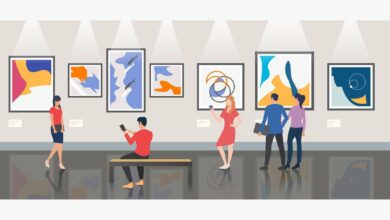Robotic Lawn Mower Guide Smart Yard Care Made Easy

Robotic lawn mowers have transformed lawn maintenance, offering automated, low-effort solutions that fit today’s tech-savvy lifestyles. From wire-free navigation to flowery garden edges, these machines combine convenience, innovation, and lawn health. Let’s explore how they work, their benefits and drawbacks, and which scenarios justify the investment.
Table of contents
What Is a Robotic Lawn Mower?
A robotic lawn mower is a smart, self-operating device designed to maintain your lawn without the need for manual pushing or riding. Think of it as the lawn care version of a robotic vacuum it autonomously trims your grass on a schedule you set. Powered by a rechargeable battery, it uses sensors, mapping technology, and sometimes even AI to navigate the lawn and avoid obstacles like trees, furniture, pets, or kids.
The mower cuts small amounts of grass frequently, resulting in a consistently well-manicured lawn. The clippings act as natural mulch, enriching your soil with nutrients. Depending on the model, it can mow in random patterns, follow GPS guidance, or use Real-Time Kinematic (RTK) positioning for pin-point precision.
Types of Robotic Mowers
There are a few distinct categories of robotic mowers:
1. Boundary Wire Mowers
These are the most common. You install a low-voltage wire around your lawn perimeter. The mower detects this boundary and stays within it.
2. Wire-Free / RTK Mowers
Using advanced GPS or RTK systems, these models don’t need wires and can mow in straight, optimized lines. They’re ideal for larger or multi-zone lawns.
3. Vision-Based Mowers
These use AI-powered cameras to detect the edges of lawns and obstacles. They’re newer on the market but offer promising precision and ease of use.
Key Components Inside a Robotic Mower
Understanding the hardware helps you see what you’re paying for:
- Cutting Deck: Usually smaller than traditional mowers, designed for frequent trimming rather than heavy-duty cuts.
- Drive Motors: Propel the wheels or tracks, allowing the unit to climb slopes and navigate tight spaces.
- Sensors: Help the mower “see” objects and edges, avoid collisions, and operate safely.
- Motherboard + Software: This is the brain storing mowing patterns, handling commands, and enabling updates via Wi-Fi or Bluetooth.
Smart Features That Add Value
Modern robotic lawn mowers are loaded with features that make them more than just grass cutters:
- App Control: Set schedules, adjust mowing zones, and receive maintenance alerts on your phone.
- Weather Sensors: Pause operations during rain to protect the lawn and the mower.
- Voice Control: Some models are compatible with Alexa or Google Assistant.
- GPS Tracking: In case of theft, high-end models can be located and recovered.
- Multi-Zone Capability: Great for complex lawns with flowerbeds or multiple grass areas.
How Safe Are Robotic Lawn Mowers?
Robotic mowers are built with safety as a top priority:
- Lift & Tilt Sensors: Instantly stop the blades if the mower is lifted or tilted.
- Child Lock Features: Prevent accidental starts.
- Low Blade Energy: The cutting blades are designed to minimize injury risk if touched.
Parents and pet owners can use these with confidence, especially with models that have obstacle avoidance and safety shutoffs.
How Do Robotic Mowers Navigate?
Different models use varied navigation technologies:
- Boundary wires: Classic mowers like Husqvarna Automower rely on buried wires to define mowable areas.
- RTK and GPS: Premium models like Segway Navimow X3 and Mammotion Yuka use precise positioning for wire-free operation.
- AI vision & LiDAR: Advanced units like Eufy E15 or Dreame A1 map lawns visually and avoid obstacles in real time.
- Tracked drives: Innovations like Lymow One feature caterpillar tracks for tackling steep or uneven terrain.
Each setup offers pros and cons in terms of complexity, cost, terrain handling, and edge detection.
Benefits of Going Robotic
Robotic mowers excel at:
- Automatic upkeep: They cut on schedule, leaving your lawn consistently manicured.
- Quiet and environmental: Battery operation means low noise and zero emissions.
- Smart features: Many include app control, voice support, weather-adaptive mowing, and security alerts.
- Healthier lawns: Regular mulching returns nutrients to the soil, encouraging lush grass.
These perks make robot mowers appealing to busy homeowners, tech lovers, and eco-conscious families.
Key Features by Lawn Scenario
- Small yards (<0.2 acres): Models like Eufy E15 offer easy setup with no wires, simple scheduling, and quiet operation.
- Medium lawns (0.2–0.7 acres): Segway Navimow i100N or Worx Landroid excel with RTK navigation and app support.
- Large/sloped yards: Heavy-duty units such as Segway Navimow X3, Mammotion Luba, and Lymow One manage steep terrain and complex layouts.
- Premium automated care: The Husqvarna Automower EPOS line caters to owners seeking boundary-wire‑free, GPS-mapped precision.
Common Drawbacks to Know
Robotic mowers, while advanced, have limitations:
- Initial setup can be time-consuming and technical.
- Edge trimming and tight corners often need hand finishing.
- Theft risk requires features like GPS tracking and alarms.
- High-end models can be expensive premium units range from $2,000 to $5,000+.
- Maintenance is required: blade replacement, firmware updates, seasonal storage.
Despite these downsides, ongoing tech improvements are reducing setup complexity and boosting versatility.
Conclusion
Robotic lawn mowers make big promises and deliver, especially for those seeking convenience, lawn health, and modern tech integration. Whether you live in a compact urban yard or a sprawling property, there’s a model that fits your level of automation and terrain challenges.
The draw? A consistently trimmed, neat lawn without the hassle of traditional mowing—plus intelligent features for smarter maintenance. If you’re ready for quieter, cleaner, and more autonomous lawn care, a robotic mower could be the upgrade your yard deserves.
FAQs
Q1: Do you really need perimeter wires?
No many modern models use RTK GPS or AI vision. However, boundary wires are still more reliable for edge accuracy.
Q2: Can a robotic mower handle slopes?
Yes models with all-wheel drive or tracked systems handle steep inclines up to 45°, while basic models peak around 20°–25°.
Q3: Are they quiet?
Yes noise levels range from 54–60 dB, far quieter than traditional gas mowers, making them neighbor- and dog-friendly.
Q4: Are robotic mowers worth the cost?
Consider long-term value: consistent lawn care, saved time, and quieter operation can justify higher prices especially for large or complex lawns.





